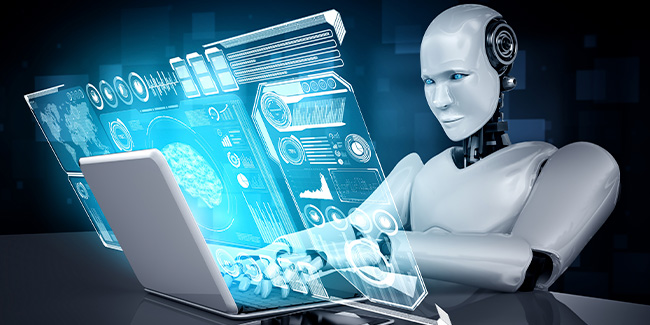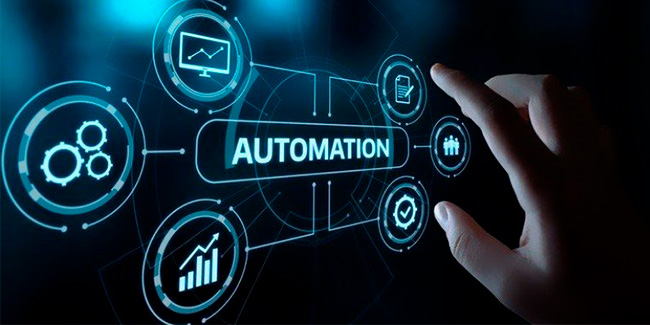

RPA and AI: Intelligent Automation for Businesses


What if we told you that all your repetitive tasks that take all your workday can be done by robots, so you could focus only on creative and important tasks? Would you believe this? If you think that it’s something that’s in the far future, you’re not right. The future is already here and it’s called Robotic Process Automation. RPA can eliminate all your routine tasks while managing a business. It automates all the boring, repetitive tasks and enhances efficiency. But what exactly is RPA, and how does it work? In today’s article, you’re going to find out more about RPA and the ways it is used.
What is RPA?
Robotic Process Automation, using software robots, acts like a human and performs tasks using a digital system. The tasks may vary, but the most common include data entry, making transactions, and responding to customer inquiries. RPA is slightly different from the automation we all know, as it doesn’t require difficult programming. This way, RPA allows users to set up bots that have minimal coding knowledge. The thing is that software robots can do these actions faster than humans, without spending extra resources on it.
RPA and AI: main differences
When we talk about RPA and AI, there are main differences between them, as RPA is often associated with AI. While Robotic Process Automation is process-driven, AI is data-driven. Let’s take a closer look at their differences. So, RPA follows the setup tasks by humans, while AI bots learn from data patterns and improve over time. AI involves machine learning, natural language processing, and cognitive automation. AI simulates human behavior and intelligence, while RPA just follows programmed human tasks. These technologies both automate tasks and basically eliminate human intervention, the way they act is different.
But the thing is that RPA and AI work well together, mutually reinforcing each other: AI helps RPA complete more complex tasks fully. At the same time, RPA can quickly act on AI insights, speeding up processes that would otherwise require manual intervention.
Robotic Process Automation: Work and Benefits
As we now understand what RPA is, we need to find out how it works and its benefits for business.
How RPA Works
RPA tools must include the following:
- Low-code capabilities: No extensive codes are needed.
- Integration with enterprise applications: RPA connects and interacts with business apps, minimizing human intervention.
- Orchestration and administration: RPA is able to configure, monitor, and secure the system.
RPA mimics human actions to perform tasks like logging in and transferring data between systems, making quick front-end integrations its strength.
Benefits of Robotic Process Automation
- Less coding: Drag-and-drop interfaces accessible to non-technical staff.
- Cost savings: Frees employees for higher-priority tasks, boosting ROI. RPA can operate 24/7 without breaks, ensuring continuous workflow.
- Customer satisfaction: 24/7 operation reduces wait times.
- Employee morale: No repetitive tasks for employees for more strategic work.
- Accuracy and compliance: Reduces errors and ensures regulatory adherence.
- No system disruption: Works on the presentation layer without altering underlying systems.
RPA boosts efficiency, cuts costs, and improves satisfaction by automating routine tasks, allowing humans to focus on more valuable work.
Where is RPA utilized?
RPA is used widely to automate business operations. To understand real-world use cases, let’s take a look at some industries:
- Finance and Accounting. RPA is able to automate tasks like invoice processing, payroll management, and generating financial reports.
- Customer Service: RPA handles customer inquiries, processes orders, and manages returns efficiently.
- Human Resources. RPA simplifies processes such as employee onboarding, leave request management, and record maintenance.
- Healthcare. RPA finds its use in healthcare systems too by scheduling patient appointments, processing insurance claims, and managing patient records.
Predictions for Robotic Process Automation
The future of RPA in tandem with AI looks promising. These two technologies can reinforce each other to handle more complex tasks and enhance automation, allowing people to focus on more important tasks. Furthermore, we’ll see more applications of RPA and AI in different industries and areas.
The combination of RPA and AI will definitely develop and revolutionize industries. This way, businesses can count on RPA and AI to improve their efficiency and customer satisfaction. At Introduct, we utilize the latest technologies to provide with the highest quality and time-saving solutions, including AI. Stay tuned with Introduct to discover more about RPA and AI. Be the first to know the latest news!
More Articles

AI Job Shift: Industries Job Market Transformation AI Job Shift: Industries Job Market Transformation
The topic of AI job replacement is widely discussed nowadays, as people worldwide are worried about possible jobs loss. Moreover, the rise of artificial intelligence has significantly changed many industries, shaking up job markets and how money flows. To find the perspective and ways to stay afloat, it becomes increasingly important to understand AI’s impact […]

AI Usage in Brewing Beer: Unveiling the Secrets AI Usage in Brewing Beer: Unveiling the Secrets
Have you ever thought that AI can be connected to the process of brewing? Surprising, right? For some, brewing beer is a process that has sacred family value, while for others - the process of satisfaction and making money. Probably, you're wondering how AI can be connected to brewing. Well, in this article we're going to unveil the secrets of AI usage in brewing beer.
